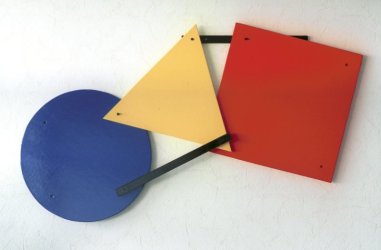
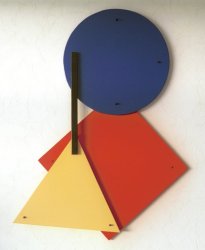
This composable object consists of five parts: a red square, a blue disk, a yellow equilateral triangle, and two black rods. The rod lengths, side lengths of the square and triangle, and diameter of the circle are all equal to 40 cm. The square and the triangle have holes near the corners, the disk has four holes arranged in a square. The distance of two holes in one piece is the same for all pieces (holes at the side of the square and triangle, and of the diameter of the disk). One black rod has three holes, the outer two at the same distance, and one in the middle. This rod is attached to the wall and it is the only fixed piece. The other black rod has two pegs sticking out which fit exactly in any of the holes. Furthermore, there are a number of small black pegs that also fit in the holes. They are used to attach two of the large colored pieces together, after aligning a pair of holes.


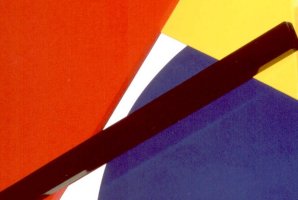
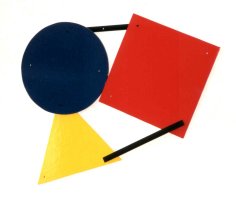
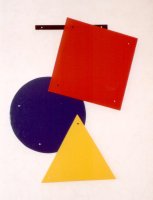
A second version of Kandinski's Color shapes uses different sizes. In the second version the triangle, square, and disk have the same area (instead of side length and diameter), so that the three colors are represented equally. The distances between two holes along a side of the triangle and square, and on the diameter of the disk, remains the same. The implies that the holes of the triangle are considerably further from the sides than in the first version. The second version has - besides the fixed black rod - two non-fixed black rods with two holes each. One more difference is that the three colored shapes are on one side decorated with a black-and-white pattern.
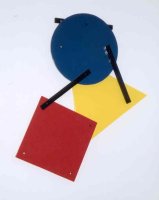
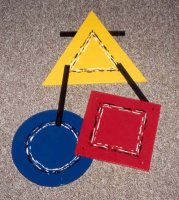
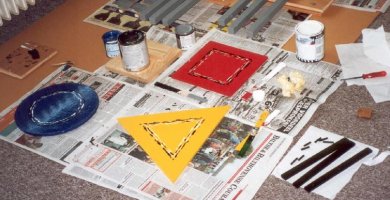
Kandinski was an artist and lecturer at the Bauhaus in Berlin in the 1930s. He lectured in color-shape theory, where he claimed that the color yellow and the shape of a triangle fit well together and strengthen each other's perception of being sharp. Similarly, the color blue and the shape of a circle strengthen each other's perception of being soft or round. The square and the color red are in between and therefore, fit well together too. Examples of this color-shape correspondence can be found in many of Kandinski's paintings, and in logos of the Bauhaus.
See also the composable Chrismas card.
Last modified: Marc van Kreveld, November 21, 2002